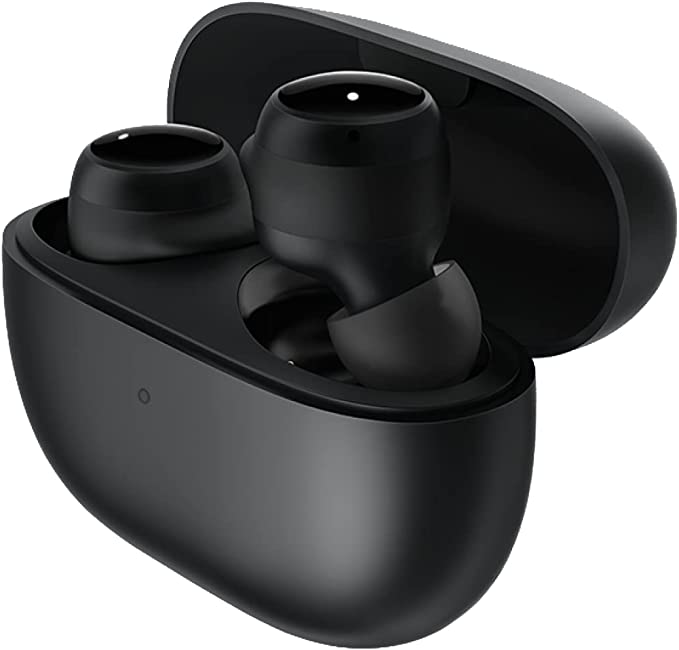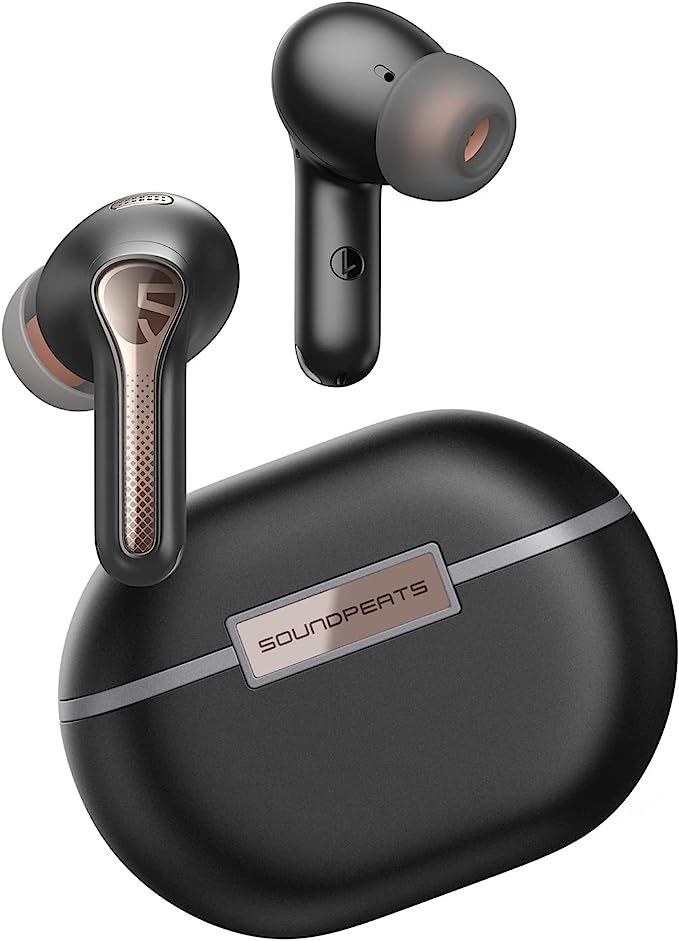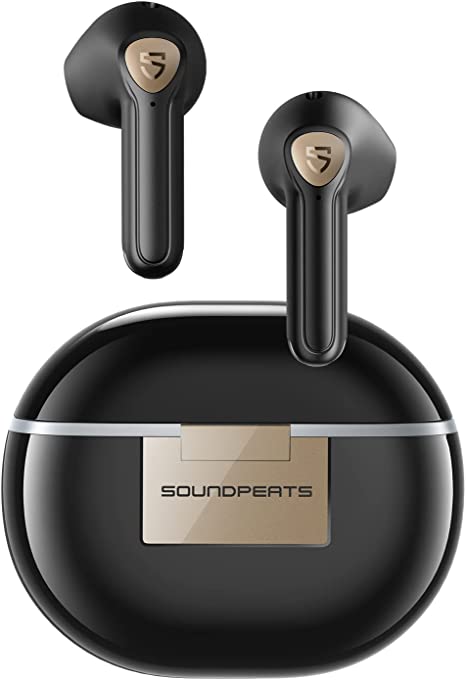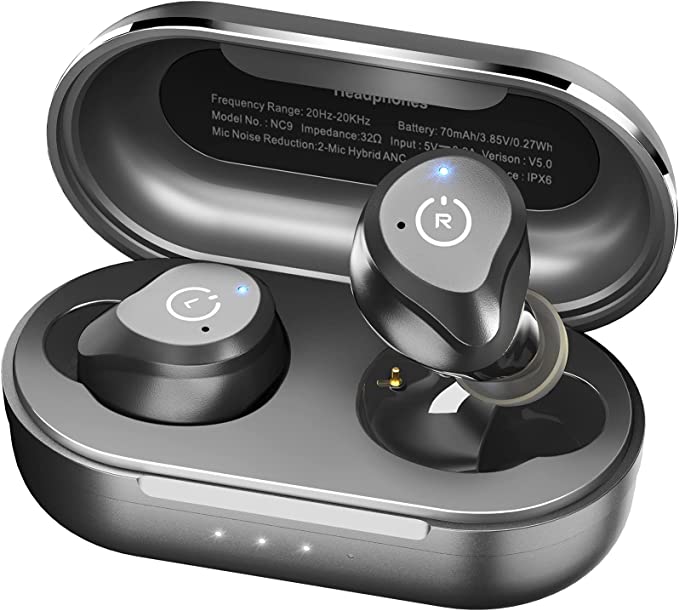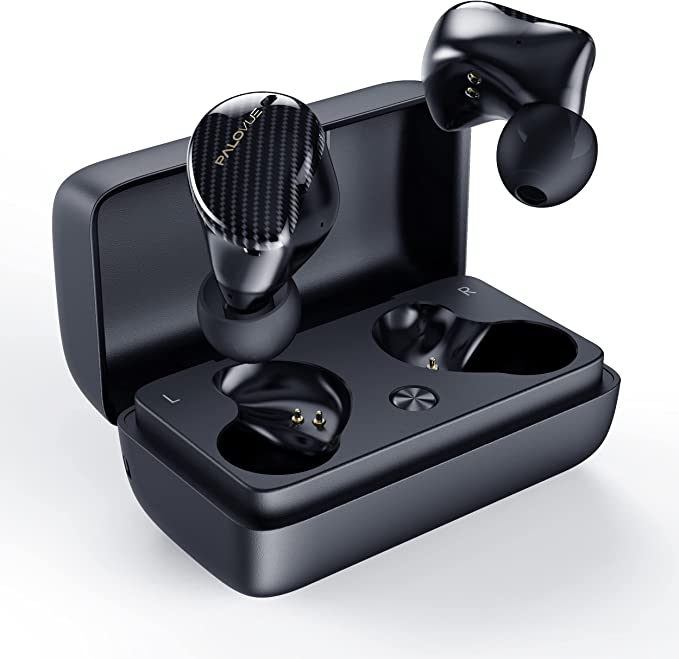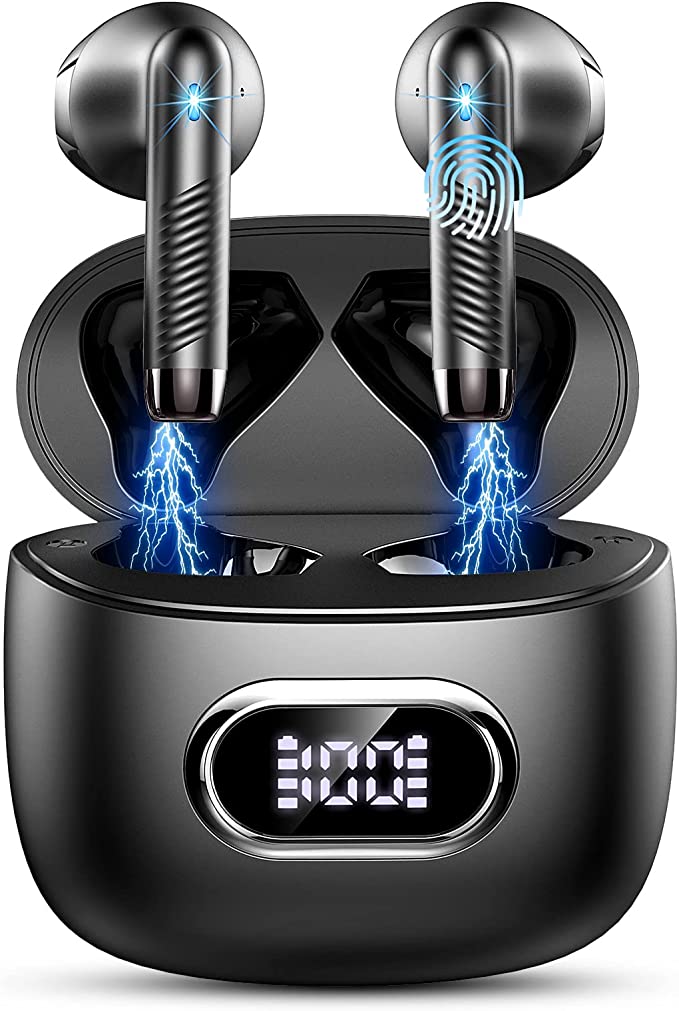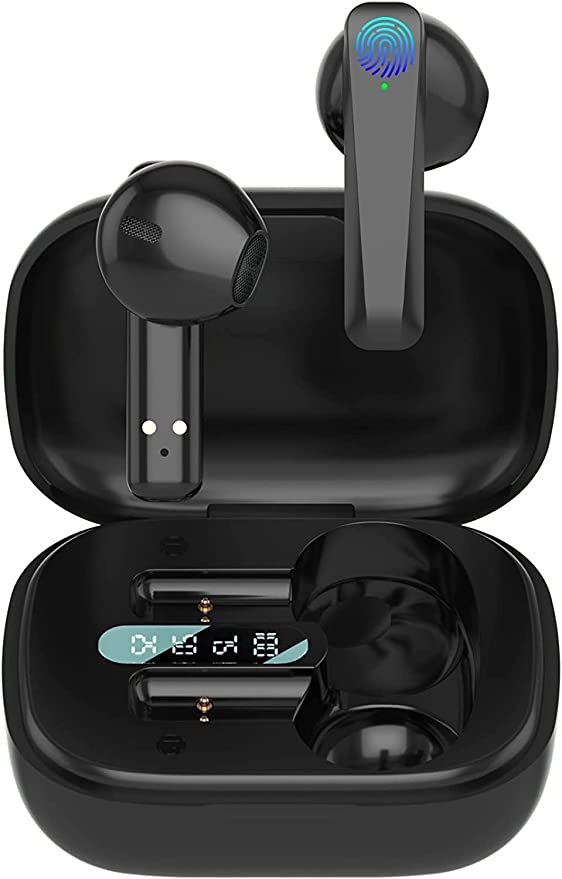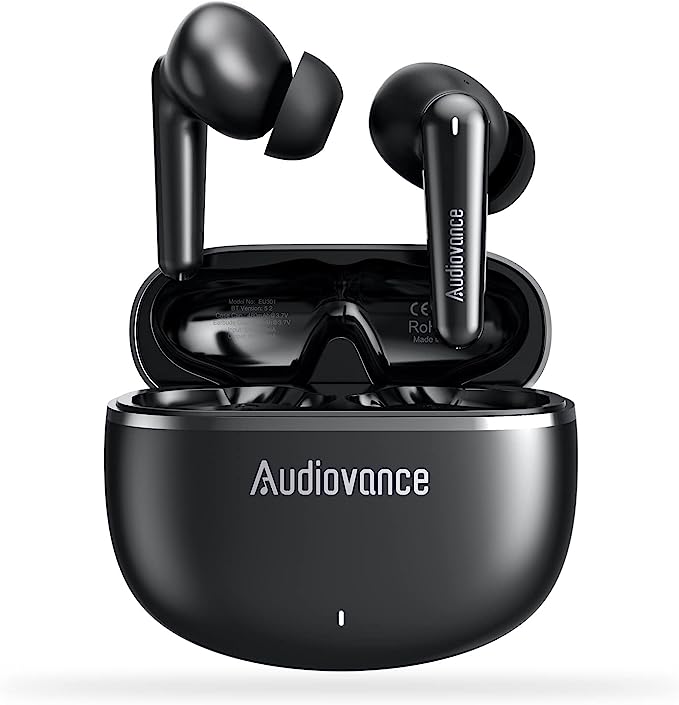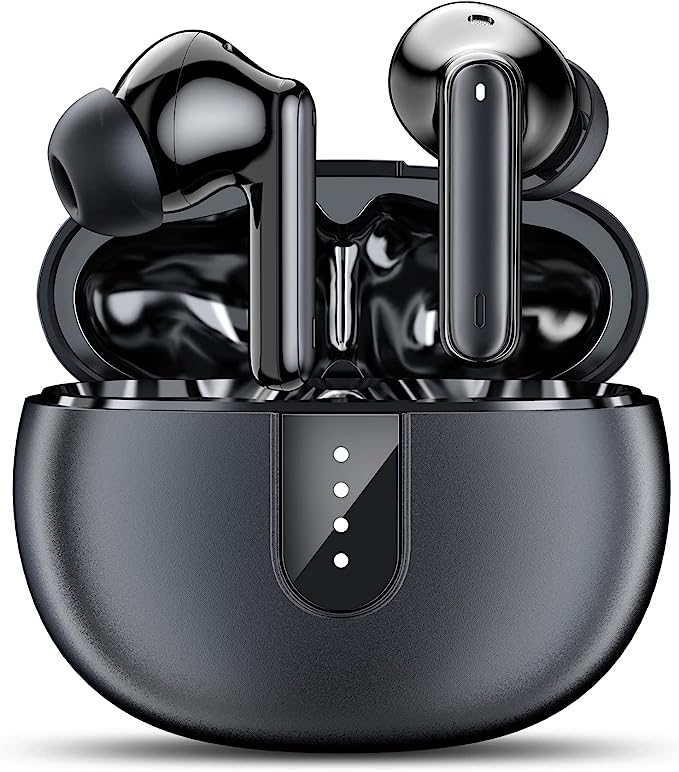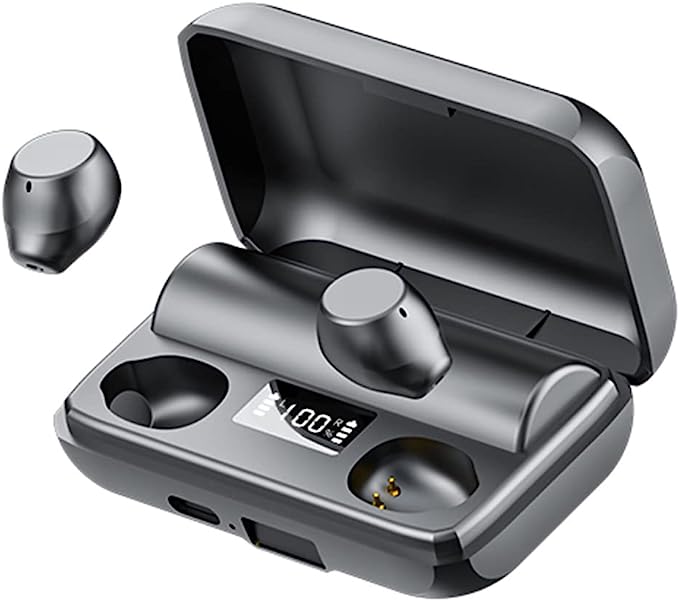Xiaomi Redmi Buds 4 Pro: Immersive Sound with Cutting-Edge Noise Cancellation
Update on March 20, 2025, 5:56 p.m.
Imagine stepping onto a crowded subway platform. The screech of brakes, the rumble of approaching trains, the babble of countless conversations, the tinny music leaking from someone else’s headphones – it’s a sensory assault. Modern life is often a cacophony, a constant barrage of unwanted sounds that can leave us feeling stressed, overwhelmed, and disconnected from our surroundings. The human desire for quiet, for a sanctuary of sound, is ancient, but the technology to achieve it is surprisingly recent.

The Quest for Quiet: A Brief History of Noise Cancellation
The earliest attempts at noise control were purely passive. Think of earmuffs, earplugs, or even simply covering your ears with your hands. These methods work by physically blocking sound waves from entering the ear canal. While effective to a degree, they’re often uncomfortable, inconvenient, and muffle all sounds indiscriminately.
The first significant breakthrough in active noise cancellation came in the 1930s, with Paul Lueg’s patent for canceling sound waves in ducts. However, the technology remained largely theoretical for decades due to the limitations of analog electronics. It wasn’t until the late 1980s that Bose Corporation introduced the first commercially available active noise-canceling headsets, primarily for aviation use. These bulky, expensive headsets were a revelation for pilots, allowing them to communicate clearly and protect their hearing in the incredibly noisy environment of a cockpit.
Decoding Silence: How Active Noise Cancellation Works
The core principle behind active noise cancellation (ANC) is surprisingly simple: destructive interference. It’s a phenomenon that occurs when two waves of equal amplitude but opposite phase meet. Imagine two identical ripples in a pond, one a crest and the other a trough. When they collide, they cancel each other out, leaving the water surface flat.
Sound, like ripples on water, travels in waves. ANC technology uses microphones to “listen” to the ambient noise and then generates an “anti-noise” wave that is precisely 180 degrees out of phase with the original noise. When these two waves combine, they effectively cancel each other out, resulting in silence – or at least, a significant reduction in noise.
There are three main types of ANC:
- Feedforward ANC: Uses external microphones placed on the outside of the earcups or earbuds to detect incoming noise. This type of ANC is effective at canceling out predictable, constant noises like the drone of an airplane engine.
- Feedback ANC: Uses internal microphones placed inside the earcups or earbuds to monitor the sound that reaches the ear. This type of ANC is better at dealing with unpredictable noises and can also compensate for variations in ear tip fit.
- Hybrid ANC: The best performing of all of them, combines both feedforward and feedback microphones, providing the most comprehensive noise cancellation. The Xiaomi Redmi Buds 4 Pro utilizes this advanced hybrid approach.
The Xiaomi Redmi Buds 4 Pro’s hybrid ANC system can achieve up to 43dB of noise reduction. To understand what this means, let’s consider some common sound levels:
- Whisper: ~30dB
- Normal conversation: ~60dB
- Busy city street: ~70-80dB
- Lawnmower: ~90dB
- Jet engine at takeoff: ~140dB
A 43dB reduction doesn’t mean that all sounds are completely eliminated. Instead, it means that the intensity of the sound is significantly reduced. A busy street at 80dB might be reduced to around 37dB, making it sound more like a quiet library. The “adaptive” part of the Redmi Buds 4 Pro’s ANC means that the earbuds can automatically adjust the level of noise cancellation based on the surrounding environment, switching between different modes to provide the optimal balance between noise reduction and situational awareness.
Beyond Quiet: Achieving Audio Fidelity
While noise cancellation is crucial for creating a peaceful listening environment, it’s only half the story. The other half is audio fidelity – the accuracy and detail with which sound is reproduced. After all, what’s the point of silencing the world if the music you’re listening to sounds muffled or distorted?
The Digital Realm: Understanding Hi-Res Audio
In the digital world, sound is represented as a series of numbers that describe the shape of the sound wave. The sampling rate determines how many times per second these measurements are taken, while the bit depth determines the precision of each measurement. Think of it like a digital image: a higher resolution image has more pixels and more color information, resulting in a sharper, more detailed picture. Similarly, higher sampling rates and bit depths in audio capture more of the original sound wave, resulting in a more accurate and detailed reproduction.
CD-quality audio has a sampling rate of 44.1kHz and a bit depth of 16 bits. Hi-Res Audio, on the other hand, typically has a sampling rate of 96kHz or higher and a bit depth of 24 bits or higher. This means that Hi-Res Audio files contain significantly more data than CD-quality files, allowing for a wider dynamic range, a lower noise floor, and a more accurate representation of the original sound recording. The Nyquist-Shannon sampling theorem dictates that the sampling rate must be at least twice the highest frequency you want to reproduce. Humans can typically hear frequencies up to 20kHz, so a 44.1kHz sampling rate (used in CDs) is sufficient to capture the full audible range. However, higher sampling rates can still provide benefits, particularly in reducing artifacts and improving the accuracy of digital signal processing.
LDAC: Unlocking Wireless Hi-Fi
Traditionally, Bluetooth technology has been a bottleneck for high-fidelity audio. The standard Bluetooth codec, SBC (Subband Codec), is designed for efficiency rather than sound quality, and it significantly compresses the audio signal, resulting in a loss of detail and clarity. AAC (Advanced Audio Coding), used by Apple devices, offers slightly better quality than SBC, but it still falls short of true Hi-Res Audio.
LDAC, developed by Sony, is a Bluetooth codec that comes much closer to delivering true Hi-Res Audio wirelessly. It supports a transmission bitrate of up to 990kbps and a sampling rate/bit depth of up to 96kHz/24bit. This is significantly higher than SBC (typically around 328kbps) or AAC (around 256kbps). The higher bitrate allows LDAC to transmit more audio data, resulting in a richer, more detailed sound with less compression.
| Codec | Max Bitrate (kbps) | Max Sample Rate (kHz) | Max Bit Depth (bits) |
|---|---|---|---|
| SBC | ~328 | 48 | 16 |
| AAC | ~256 | 48 | 16 |
| LDAC | 990 | 96 | 24 |
The Xiaomi Redmi Buds 4 Pro’s support for LDAC is a key feature that sets it apart from many other wireless earbuds in its price range. It allows users to enjoy near-lossless audio quality when paired with a compatible source device (such as a smartphone that also supports LDAC).
Dual Drivers: A Symphony of Sound
The Redmi Buds 4 Pro also utilize a dual dynamic driver system. Most earbuds use a single driver to reproduce the entire frequency range. However, a single driver often struggles to handle both deep bass and clear treble frequencies effectively. A dual-driver system, on the other hand, uses two separate drivers:
- Larger Driver (10mm aluminum alloy diaphragm): Dedicated to handling low frequencies (bass and lower mids). The larger diaphragm is better at moving air, which is necessary for producing powerful bass.
- Smaller Driver (6mm titanium diaphragm): Dedicated to handling high frequencies (treble). The lighter, stiffer titanium diaphragm is better at vibrating rapidly, which is necessary for producing clear, detailed highs.
A crossover network acts like a traffic controller, splitting the audio signal and sending the appropriate frequencies to each driver. This ensures that each driver is only handling the frequencies it’s best suited for, resulting in a more balanced, accurate, and detailed sound signature. Imagine an orchestra; it’s more effective to have sections of instruments responsible for their part than for one instrument to try to play all parts.
The Complete Package: Other Features and Practical Benefits
Beyond noise cancellation and high-fidelity audio, the Xiaomi Redmi Buds 4 Pro offer a range of features designed to enhance the overall listening experience:
-
Transparency Mode: Staying Aware of Your Surroundings: While noise cancellation is great for blocking out distractions, there are times when you need to be aware of your surroundings – crossing the street, having a conversation, or listening for announcements. Transparency mode uses the external microphones to amplify ambient sounds, allowing you to hear the world around you without removing your earbuds. The Redmi Buds 4 Pro even offer an “enhanced voice mode” to make conversations clearer.
-
Call Clarity: Microphone Technology and Noise Reduction: Each earbud features three microphones that work in conjunction with a neural network-based noise reduction algorithm to ensure clear voice calls, even in noisy environments. The microphones use beamforming technology to focus on your voice and filter out background noise. The neural network is trained to distinguish between speech and noise, further improving the clarity of your voice.
-
Powering Your Day: Battery Life and Charging: The Redmi Buds 4 Pro offer up to 9 hours of playback on a single charge, and up to 36 hours total with the charging case. This is enough to power even the longest commutes or workdays. A quick 5-minute charge provides up to 2 hours of listening time, perfect for those times when you’re in a hurry.
-
Seamless Connectivity: Bluetooth 5.3 and Dual-Device Pairing: The earbuds utilize Bluetooth 5.3, the latest version of the Bluetooth standard, which offers improved stability, range, and power efficiency. Dual-device pairing allows you to connect the earbuds to two devices simultaneously (e.g., your phone and your laptop) and seamlessly switch between them.
-
Intuitive Control: In-Ear Detection and Customization: The earbuds feature in-ear detection, which automatically pauses playback when you remove them and resumes playback when you put them back in. This is achieved using proximity sensors that detect when the earbuds are in contact with your ear.
The Redmi Buds 4 pro also incorporates Wind Noise reduction. The built in metal wind shield, significantly reduces noise caused by wind, and the software algorithm automatically compensates to provide clear audio.
The Future of Sound
The Xiaomi Redmi Buds 4 Pro represent a significant step forward in wireless audio technology, bringing together advanced noise cancellation and high-fidelity sound in an affordable package. However, the quest for the perfect listening experience is ongoing. We can expect to see even more sophisticated noise cancellation algorithms, wider adoption of lossless audio codecs, and further integration with AI assistants and smart home devices in the future. The pursuit of perfect sound is a journey, not a destination, and the Redmi Buds 4 Pro are a compelling milestone along the way.
